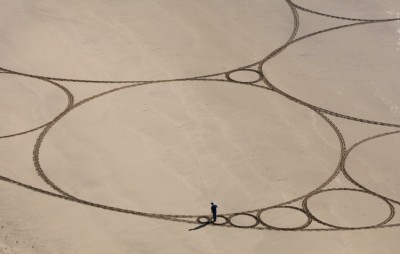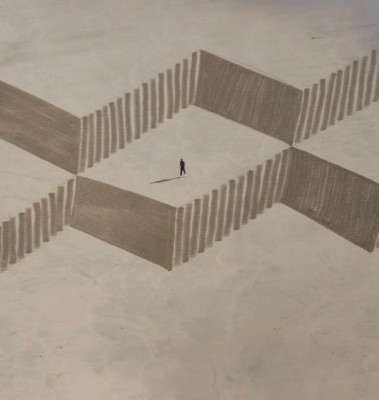Ever since my previous post, Cloudy With A Chance of Awesome, I’ve been a bit obsessed with ephemeral art. I’m into investigating what motivates people to create, and artists who work within the context of impermanence are particularly interesting to me.
Most of us create to literally create – something, a painting, a sculpture, a drawing, a photo. We can hold these things in our hands, look at them, share them, save them and come back and revisit the ideas that informed their creation later on.
So, what does it mean when someone makes something that’s not meant to stick around? Like those messages in the Mission: Impossible movies – things that self-destruct in their own way. For some artists, like Andy Goldsworthy or Jim Denevan, destruction is a part of the process of making art.
Jim is renown for etching huge designs on beaches with sticks, rakes and shovels. He’s not alone in embracing the medium, but he is my favorite artist within the niche. The best part of his work is that it’s never meant to stay around too long. His pieces are like sparks, bright flashes of illumination and beauty that disappear quickly in the grand scheme of things. His choice to work within the tidal plane informs his entire creative process – and he’s got to work quickly, because the tide is always coming back in.
So what do you think? Does including destruction or disappearance in artwork make it more interesting or beautiful? Or, is it just another interesting way to spend a day and have nothing to show for it?
Related articles
- Cloudy With A Chance of Awesome (zatista.com)
- 21 Unforgettable Examples of Land Art (mymodernmet.com)
- Jim Denevan on The Anthropologist (swiss-miss.com)
- Andy Goldsworthy Snowballs from June 2000 (steffanjoneshughes.wordpress.com)







Comments (0)